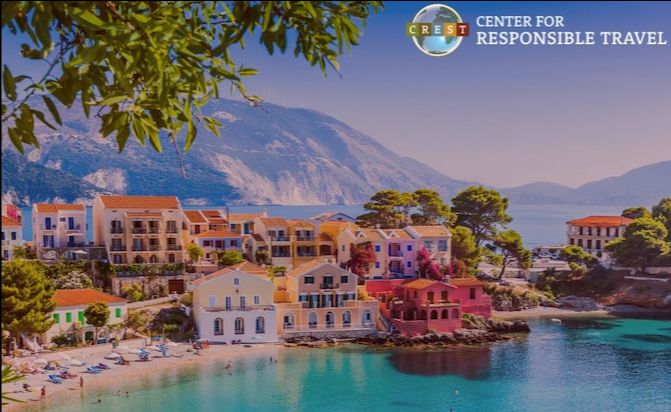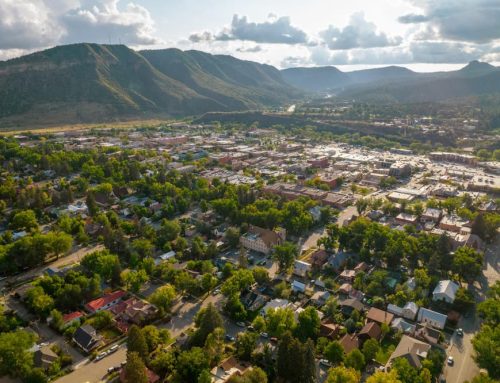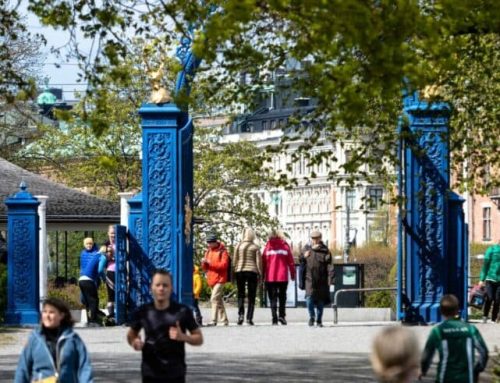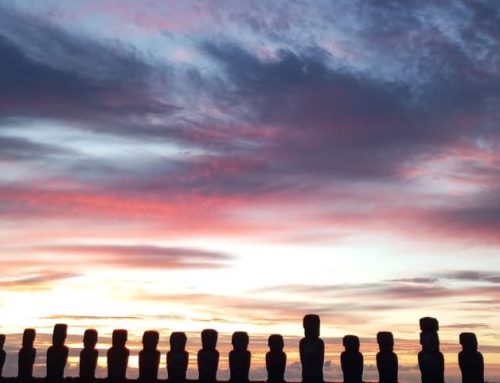Destination Stewardship Report – Autumn 2022 (Volume 3, Issue 2)
This post is from the Destination Stewardship Report (Autumn 2022, Volume 3, Issue 2), an e-quarterly publication that provides practical information and insights useful to anyone whose work or interests involve improving destination stewardship in a post-pandemic world.
Key Takeaways from CREST’s Forum On Destination Stewardship
What does it mean to implement a destination stewardship model? What are the successes and challenges communities face throughout the process? And what does a shift towards stewardship mean for destination marketing? Alix Collins summarizes the key takeaways from the 2022 World Tourism Day Forum.
A Better Way Forward
For this year’s World Tourism Day Forum (27 Sept. 2022), we at the Center for Responsible Travel (CREST) wanted to shine a light on destination stewardship. Initially, we were going to focus solely on the mindset shift from marketing to management, but implementing the destination stewardship model isn’t just about making that shift. It’s also about governance, funding structures, stakeholder engagement, political will, and community and private sector buy-in.
So we shifted our focus. The first panel focused on implementing the destination stewardship model. In theory, bringing people together for better destination stewardship sounds easy. In practice, however, it can be challenging to implement. While there are fantastic models across the world, we decided to focus on US destinations because of the political and cultural landscape that poses unique challenges. The second panel focused on rethinking destination marketing, moving from tourist-centric marketing that aims to get more heads and beds and towards community-centered storytelling that aims to capture a destination’s sense of place and benefit the community in ways requested by the community.
Our speakers included: Jonathan Tourtellot (Destination Stewardship Center), Seleni Matus (International Institute of Tourism Studies), Ilihia Gionson (Hawai‘i Tourism Authority), Dawnielle Tehama (Willamette Valley Visitors Association), Dr. Brooke Hansen (University of South Florida), Sven Gonstead (Big Bay Stewardship Council), Lebawit Lily Girma (former Editor-At-Large at Skift), Rob Holmes (GLP Films), JoAnna Haugen (Rooted), Jayni Gudka (Unseen Tours), Tom Smith (Intrepid Travel), Andreas Weissenborn (Destinations International), and Diwigdi Valiente (Panama Tourism Authority).
Key Takeaways
Collaboration is Key
In his keynote address, Jonathan Tourtellot said that a “lack of a collaborative structure at the destination level is why I’ve become a relentless advocate for the creation of destination stewardship councils, by whatever name, [to take] care of the ultimate tourism product, which is a place – a place where people live.”
We can accomplish more together than we can apart, and yet doing so is easier said than done. Collaboration is about more than sharing ideas. As Dawnielle Tehama, mentioned, it’s about stakeholders co-designing and co-deciding tourism policies and practices that impact everyone in the community. And a step beyond that, it’s about co-managing as well.
In Willamette Valley, this looks like developing and adopting a place-based strategy by “connecting and building bridges between different sectors of the tourism industry, and starting to have the conversation with our state and local agencies, our DMOs, and other stakeholders,” she said, including the wine industry, hospitality, lodging, guides, operators, and outfitters. In Big Bay, Michigan, an isolated, rural community, it looks like connecting stakeholders through formal and informal means, from surveys and in-person forums to their annual Fall Festival.
There is no one-size-fits-all model
Every destination is different. Dr. Brooke Hansen and two of her Florida’s Keep America Beautiful affiliates are following a model inspired by the work of Ilihia Gionson and his team at the Hawai‘i Tourism Authority (HTA), but the models are vastly different. In Hawai‘i, we are seeing a top-down approach, with HTA leading the effort to co-develop island-wide destination management plans with counties and visitor bureaus. In Florida, there is a lack of direction from the state level, so Dr. Hansen and others are taking a more grassroots approach. By bringing together nonprofits, volunteers, tourists, and academia, they are testing a model specifically designed for Florida but one they hope others can look to.
We need to manage our invitations
Overtourism was a problem before the pandemic. Residents of Barcelona and Venice, for example, took to the streets to protest the unsustainable influx of tourists into their cities in 2017. But during the pandemic, tourism ceased in many places and exploded in others, primarily in destinations where travelers could experience the outdoors. As a result, many destinations, including Hawai‘i, began to rethink their relationship with tourism.
“In Hawaiian culture, there’s a specific protocol towards asking for entry and being granted entry,” Gionson noted. With limits on the number of people allowed in specific places, they can better manage funds and staffing. It also allows them to say, “I’m sorry, I can’t invite you in at this time, the other 2,000 people are invited in, you’ve got to wait a minute. And that’s something that I think the market just needs to understand in these times when demand is this great for these finite resources.”
If we want to be more authentic, we need to be more inclusive
“The market is demanding more authenticity…there’s only one source of authenticity, and that’s the community, you can’t counterfeit it, can’t manufacture it,” said Gionson. Andreas Weissenborn also noted that in a world where destinations are competing for tourists around the world, you need to have a brand, and “if you build an authentic and inclusive, distinct brand, you inspire people to want to visit you.” This brand, he notes, isn’t created or owned by a destination organization but is developed and owned by the community.
Being authentic also means being inclusive, which doesn’t solely mean gathering input from communities but giving them agency over developing tourism policies, practices, and products.
Jayni Gudka discussed the importance of including voices from marginalized communities not only in destination marketing but also in development of tourism products. For community tours, she notes, this means asking who is deciding what’s included and excluded from the tour, and who gives the tour, particularly whether it’s someone from the community or outside of it. “For us at Unseen Tours, it’s really important that we don’t speak on behalf of people with experience of homelessness and marginalization, who are our tour guides, but that we provide them with opportunities to share their own stories and opinions with the world through their walking tours.”
Diwigdi Valiente shared similar insights from working with indigenous communities in Panama, who are now seeing more representation at all government and business levels. “Now, we are not just the ones that dance in order to show our culture to visitors, but we’re also being part of the of the tourism chain, not only being the providers of services, but also being more involved in the tourism management.”
We need metrics that matter
We need to move beyond metrics that promote quantity over quality and towards metrics that matter. Communities around the world are being pushed to their breaking point as unsustainable numbers of tourists visit their destinations and put a strain on their resources as well as natural and cultural assets.
Tom Smith noted that the “ultimate measure of success has to be the long term health of the communities that that we visit on our tours….Destinations that truly embrace and engage and consider the happiness of residents, hosts, and travelers will ultimately create the most economic and social value for everybody.”
It’s not about tourism
JoAnna Haugen said it best: “It’s important to consider [that] when it comes to community-focused tourism, it’s not about tourism. The focus really needs to be on the holistic well-being and care of the community, and tourism is a vehicle or a tool that can support that, if and when appropriate.”
We at CREST couldn’t agree more. CREST’s mission and vision for tourism embody this same principle. Tourism is not a product but rather, a mechanism through which communities can improve livelihoods for themselves and their neighbors, conserve and raise awareness about their most precious natural assets, share their cultural heritage and ideas, and spark meaningful entrepreneurship opportunities and positive change.
Ultimately, as Tourtellot notes, “tourism done well can help protect these places. Done badly, it can help destroy them. Good destination stewardship can make the difference.”
Missed the 2022 World Tourism Day Forum? You can watch the recording here.
About the Author
Alix is the Director of Marketing & Communications at the Center for Responsible Travel (CREST). Her passion for sustainable and responsible tourism stems from her experience living with an elephant-keeping community in northern Thailand, where she lived with a host family and saw firsthand how tourism could have a positive impact not only on small, rural communities and cultures but also on their environments and wildlife.





